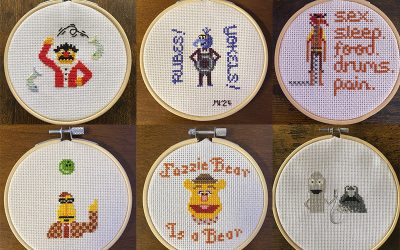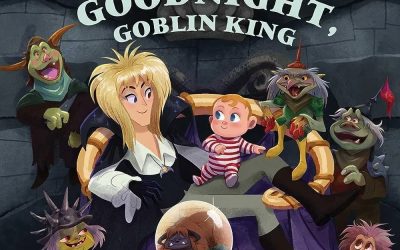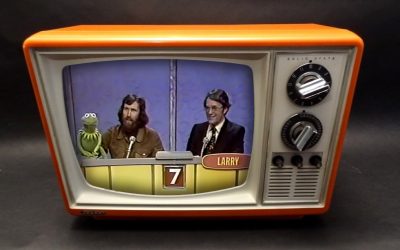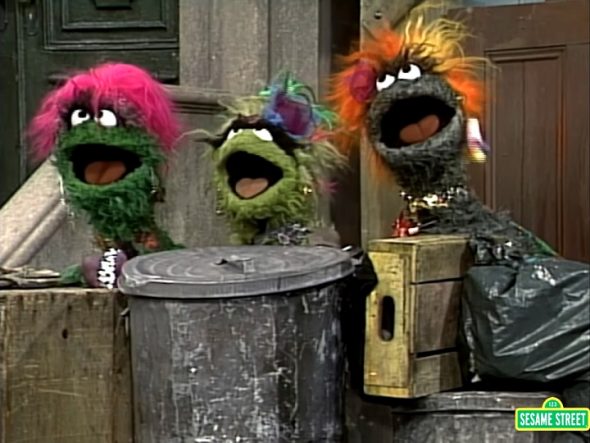
Not long ago, I was Googling some stuff, looking for some information for a possible Sesame Street-related article for ToughPigs.com, this website that you’re reading right now. My search led me to this interesting article from 1987, from a Pennsylvania news publication called The Morning Caller.
It’s called “Kids Still Count on Sesame Street,” and it’s a report from the set of the show. You should click that link up there and read the whole thing when you’ve finished reading this, because there are several interesting things about it. For one thing, the reporter is visiting as production of the 19th season is underway, and it’s clear that the people working on the show are well aware of the fact that they’re fast approaching their 20th anniversary and that the show is officially An American Institution – and that that’s a pretty darn big deal.
Another thing I find interesting because I’m a big nerd about TV & movie filming locations, especially for New York-based productions: The article was written after Sesame Street had left their original production home at Reeves Teletape Studios’ facility at 81th Street & Broadway, but before they had settled in at their current and longtime home at Kaufman Astoria Studios in Queens. At the time of the article, they’re at Unitel Studios, a former Teletape facility at 55th Street & 9th Avenue, which Muppet Wiki tells us was previously the home of The Dick Cavett Show. Isn’t that neat? It is! No, really. It is. Trust me. It’s very neat.
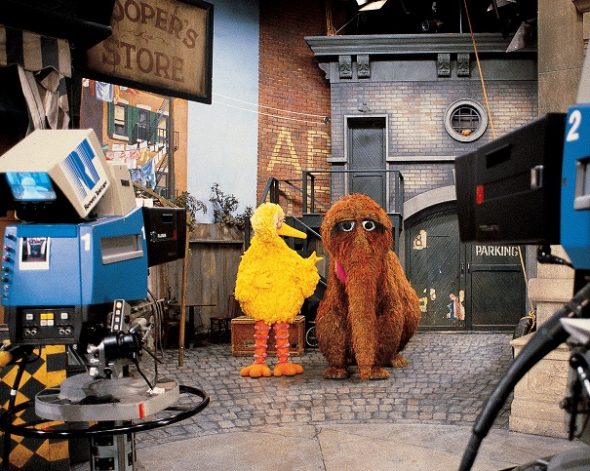
So there’s all that. But this was the part that really stood out to me:
[Sesame Street producer Lisa] Simon says the show also may have gone too far by featuring a punk-rocker teen in a scene about homework. After watching the segment at home, [Joan Ganz] Cooney, who is president of the show’s parent organization, Children’s Television Network [sic], called and in a polite way suggested to Simon that the teen never be used again.
Although many Muppets have a new-wave look, Cooney thought a human punk rocker was not an image the show wanted to promote. “We were trying to keep current. We have to keep in mind that it really isn’t a New York show,” Simon says.
Huh. Okay. First of all: Sesame Street isn’t a New York show?! I know it’s designed to appeal to children all over the country and the world, but if you ask me, it certainly belongs on any list of great New York TV shows. Right alongside Taxi, Barney Miller, and The Critic. Sure, the inserts of the classic era included segments set in every conceivable environment (farms, crayon factories, elaborate pinball machines), but the titular street is at the center of the show, and it’s pretty clearly a New York street.
Also, were “punk-rocker teens” really so rare outside of New York City in the 1980s? I’m no expert, but I’m pretty sure much of American punk culture was influenced by the punk scene coming out of the UK. Also, I once saw a very realistic movie from 1986 where there was a punk riding a bus in San Francisco, all the way on the opposite coast from New York, so I know for a fact they existed outside the Big Apple.
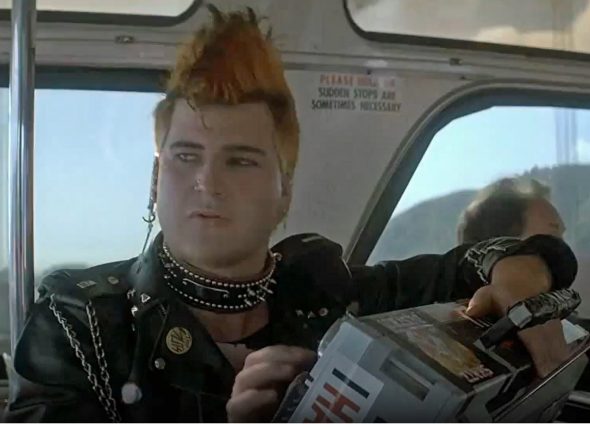
Most importantly, though: Isn’t the concept of accepting all different kinds of people one of the quintessential themes of Sesame Street, at least in the “life lesson” category that lies beyond the basic letters and numbers? It’s so strange to hear that the producers made a decision to exclude anyone.
So then I was thinking, just how punk was this character? They must have been pretty extreme to inspire Joan Ganz Cooney to make a phone call, and for the creative team to put a moratorium on punks. I was picturing a human actor with a huge, spiky, green mohawk, piercings everywhere, and jeans ripped to shreds, spray-painting anarchy symbols on the Fix-It Shop and telling Big Bird why he should demolish the establishment. If that was the case, I could understand why Lisa Simon thought it was a step too far for the tiny tots in the audience… and the potentially fragile sensibilities of their parents.
I asked three of my fellow Sesame Street aficionados (Shane Keating, Scott Hanson, and Joe Hennes) if they knew anything about the episode in question. All three knowledgeable nerds agreed: It was Episode 2155, in which Micki’s friend Tanya drops by.
Wait… Micki? Yep. Micki is one of those human characters who was only around for a few seasons, and she’s been largely forgotten, but she was a teenager who worked at the Sesame Street library for a while. In this episode, Micki hangs out with her friend Tanya, who is the punk at the heart of the controversy.
Are you ready to see what Tanya looks like? Are you sitting down? Do you have your heart medication handy? All right. Don’t say I didn’t warn you… Now gaze upon the SHOCKING personage of Tanya the PUNK-ROCKER TEEN:
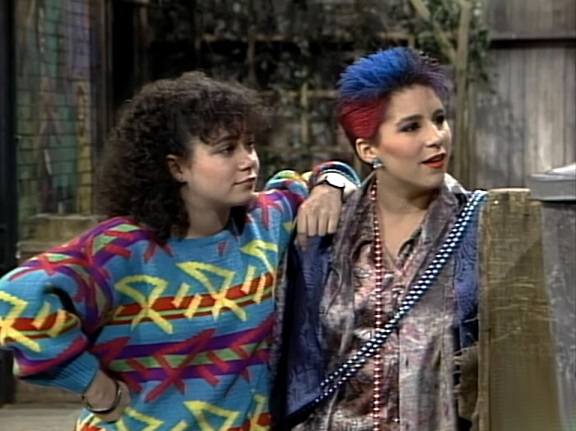
She’s the one on the right, by the way. Anti-climactic, isn’t it?
Of course, standards and perceptions of what qualifies as “edgy” are constantly evolving, and I assume Tanya’s appearance must have been more startling in 1986. But wow, does it ever seem like nothing now. Just the other day I was served by a middle-aged lady barista with dyed blue hair at a coffee shop full of mild-mannered customers. Or maybe there was something other than the hair that led to Tanya being declared taboo? Maybe long necklaces are inappropriate for some reason I’m not aware of.
Based on Muppet Wiki’s guide, Tanya doesn’t even do anything punk in the episode. She meets Elmo, she helps him look up a word, she talks to Grundgetta. She does get a little impatient when Micki is late for their hangout, but she doesn’t even smash anything.
I have no idea if Tanya ever would have appeared again even if Joan Ganz Cooney hadn’t expressed her concern. But it’s too bad she wasn’t given a chance. I’m glad, though, that the Morning Caller article acknowledged that “many Muppets have a new-wave look.” As I’m sure EVERYONE reading this is already thinking, the Muppet band How Now Brown and the Moo Wave were explicitly new-wave. Nick Normal and the Nickmatics, the band who sang “The Letter N,” had a decisively punk look to them.
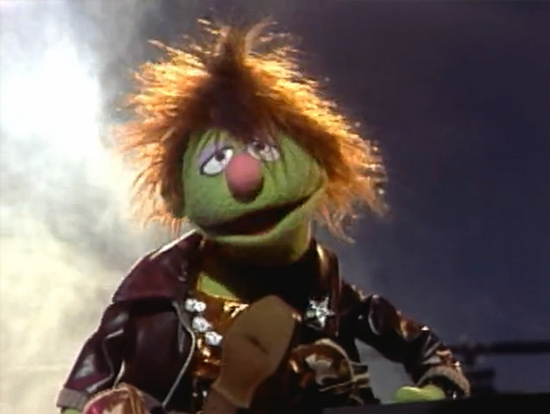
And there’s another punk-styled Sesame Street band who appear in this very episode! When Grundgetta sees Tanya, she mistakenly assumes that Tanya is a fellow grouch, and the episode concludes with Grundgetta and her pals, decked out in punk fashion, singing “Grouch Girls Don’t Wanna Have Fun.” A version of that song later appeared on the album Sesame Road, which has since been reissued several times in several different formats. And the original version is even on Sesame Street‘s YouTube channel!
Tanya’s legacy lives on! So there’s a reason not to feel grouchy.
Thanks as always to Muppet Wiki for lots of things! Click here to go too far on the Tough Pigs forum!
by Ryan Roe – Ryan@ToughPigs.com

